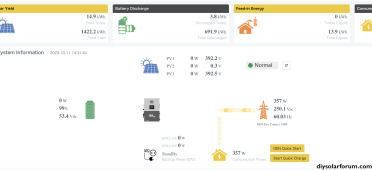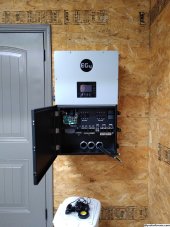I'm doing research to possibly install the EG4 18Kpv at my house. In looking at the Whole Home Backup using a Feeder Tap wiring diagram in the 18Kpv user manual, I'm wondering, does it make sense to use a SPAN smart panel as the main breaker panel? I'm assuming SPAN panels include a 200 amp breaker. Is this allowed in the feeder tap setup? Would there be three 200 amp breakers in this scenario (main service breaker, feeder breaker and breaker in the SPAN panel)?
EG4 batteries are not on SPAN's list of compatible battery systems. Would I even get any of the smart capabilities of a SPAN Panel if I used EG4 batteries?
With out battery support battery support there are some feature limitations:
Feature limitations with non-integrated battery systems:
The SPAN Home App does not support any off-grid features for
these systems. Automatic load management during outages,
backup time remaining estimations, and backup priority features
are not supported with these systems. During an outage, you will
need to toggle Circuits off via the Home App if you wish to power
them off.
Power and energy data in the SPAN Home App may be incorrect or
incomplete depending on the installation method and the battery
storage system. During an outage, SPAN will continue to report all
energy coming into the home as grid power.
While the diagram in the manual shows that there could be up to 3 breakers/disconnects, depending on the actual design, components used, distances between parts, and NEC version in use, a main breaker may not be needed in the main load panel and a main lug panel could be used, but in may not make sense to remove an existing breaker as part of a solar retrofit.







